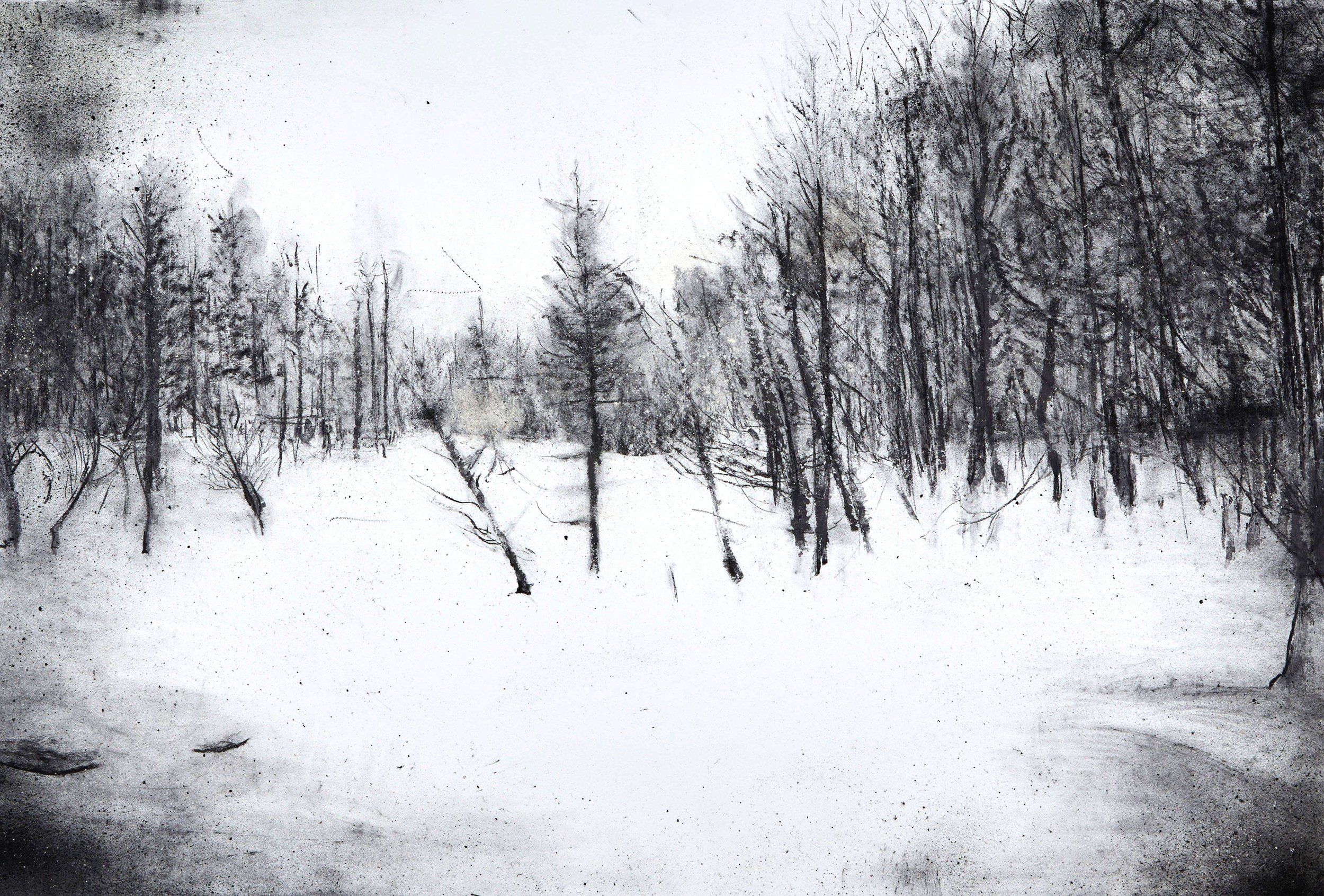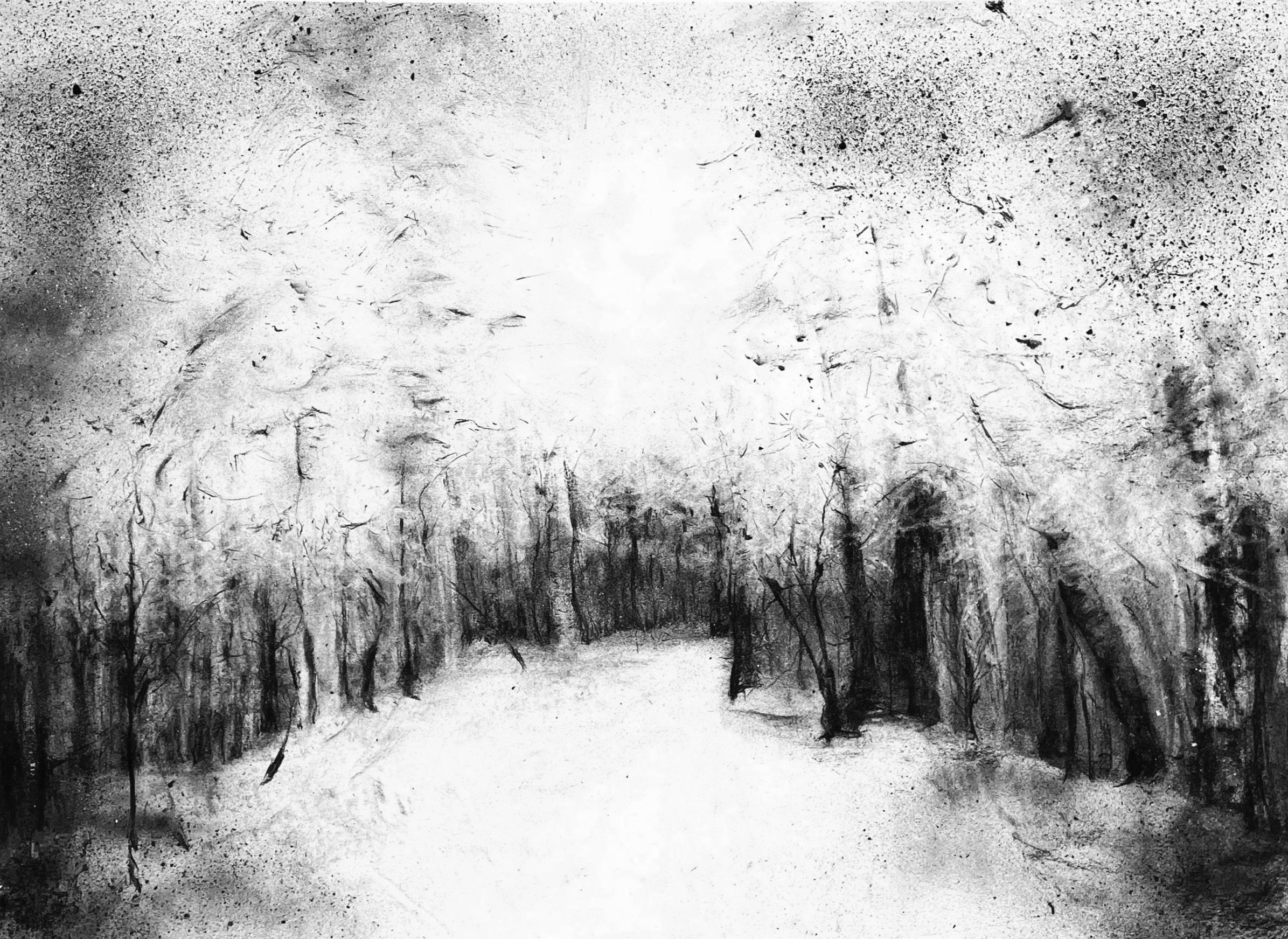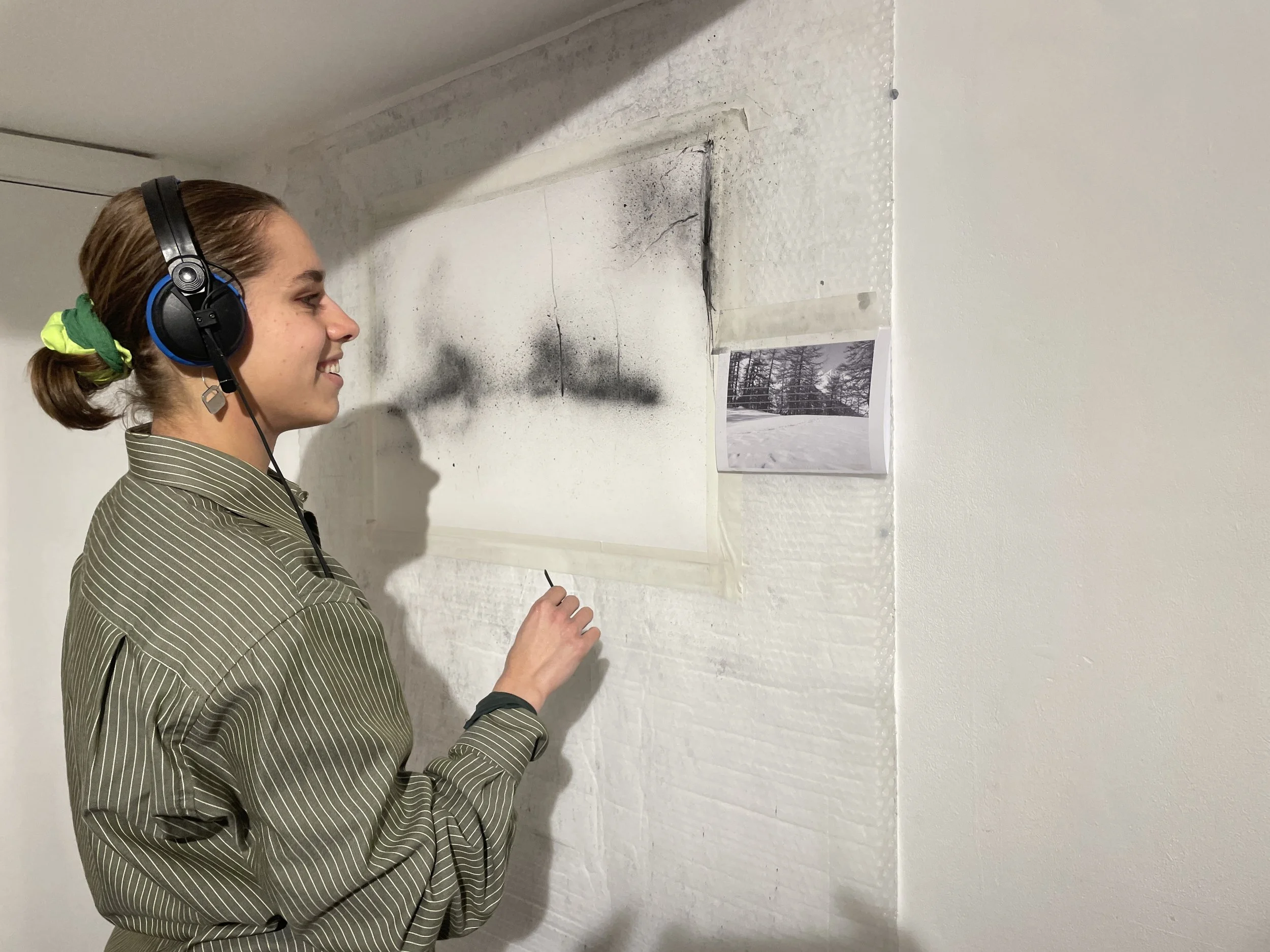
b. 1998, London (French-Dutch)
Hello! My name is Apolline.
I’m a visual artist based in London, inspired by Surrealism and residue.
In my current practice, I reframe found debris, drawing out the disappearing environments that once belonged, and want to belong in, a city.
Through drawing and jewellery, I work to elevate materials often encountered as ephemera or waste: charcoal, studio dust, plastic, petals, excess from building projects, old magazines, and live music - juxtaposing these with materials widely valued for their alluring and attractive qualities. I use silver and reflective materials to shed light on the organic and synthetic collision of these residues in the city. Amidst our growing indifference to the environment’s value systems, my aim is to call on our willingness to treasure such instances at all - instances which adorn a city with textures and details increasingly lost to our digital age.

To value a texture
akin to a reliquary film,
{The ear yells to eyes}
Care to l00k ?
A joy noir-atopic
eroded our city of screens.


